Tibetan Prayer Flags
- Eric
- Last Updated : 09/12/2025
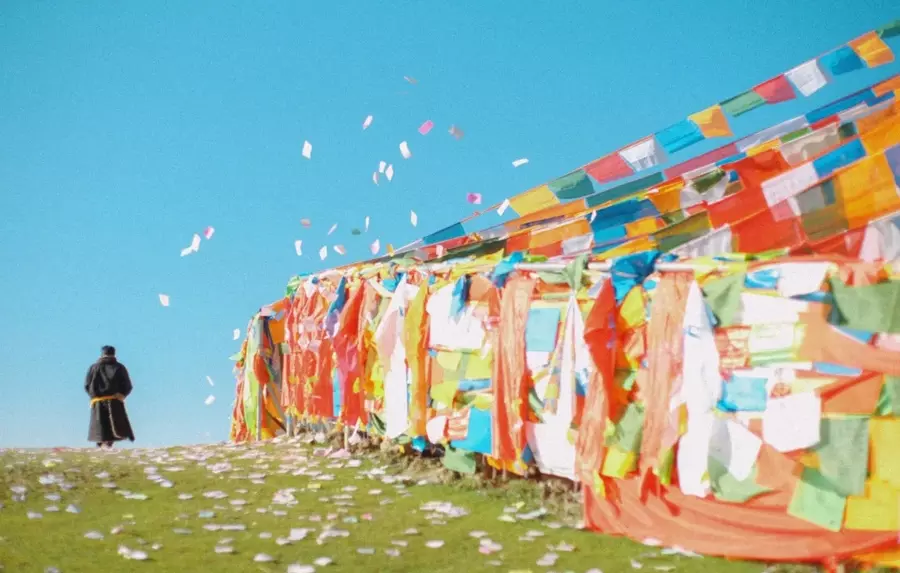
When you travel to Tibet, you can see a great number of Buddhist prayer flags hung at the summits of mountains, passes of mountains, banks of rivers, sides of roads, roofs of monasteries, etc. But do you even know that these are not just some fancy accessories? Everything from the color to the word holds a meaning. Originating from Bon culture, the prayer flags, namely Longda in the Tibetan language, primarily carry our prayers via the wind to get them answered.
Well, you may be curious about the meaning of the Buddhist/Tibetan prayer flags. Here are 10 things you should know:
Content Preview
- 1. The Origin of the Tibetan Prayer Flags
- 2. Content and Meaning of the Prayer Flags
- 3. Forms of Prayer Flags
- 4. Each Color of the Flag Symbolizes an Element
- 5. Prayer Flags are the Religious Token for Well-being
- 6. They Should Never be Put on the Ground or Kept Still
- 7. There are Two Kinds of Flags- Horizontal and Vertical
- 8. It's a Good Omen to Receive Buddhist Prayer Flags as a Gift
- 9. Color Fading of These Flags also has a Meaning
- 10. The Auspicious Time to Put up a Flag is During the Tibetan New Year
- Conclusion
1. The Origin of the Tibetan Prayer Flags
The reason why those streamers are known as prayer flags is that there are numerous Buddhist sutras printed on them. In Buddhist believers’ eyes, the prayer flag waving in the wind once means reciting the sutra once, which is a way to show pilgrims’ wishes and seek blessings from the Gods. Therefore, the prayer flag has become a link between Gods and men. According to Tibetan Buddhism, where there is a prayer flag, there is God and wishes.
2. Content and Meaning of the Prayer Flags
The main contents of the scriptures are the Indian Dharani mantra, the six-character Mantra (Om Mani Padme Hum), Sanskrit mantras, auspicious words, proverbs, and prayer scriptures. And some of the text on the prayer flags is purely selected from Buddhist tantra mantras, such as the White Parasol Mantra on the Great Prayer Flag.
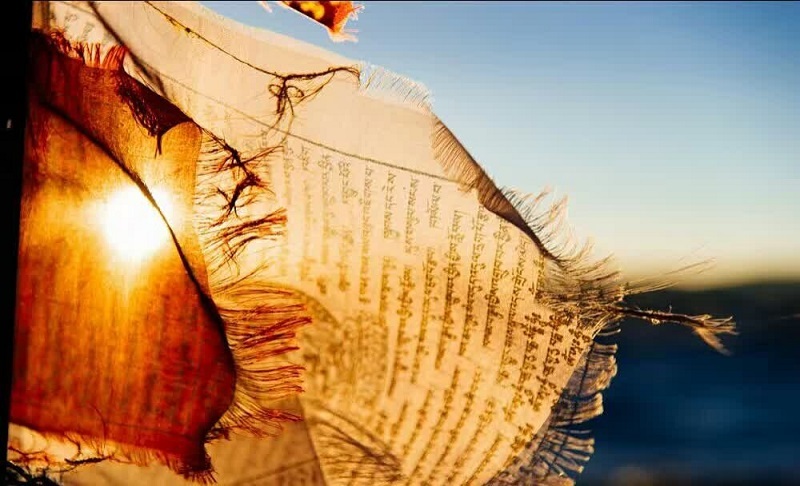
The well-known Six-Character Mantra does not have a single, definitive meaning. It’s a combination of values like compassion, ethics, patience, diligence, renunciation, and wisdom. It is said that if you recite the mantra during meditation, it can cure pride, jealousy, ignorance, greed, and aggression.
3. Forms of Prayer Flags
In terms of their external forms, prayer flags can be roughly classified into three types. The first is a long rope hung with a five-color square cloth (blue, white, red, green and yellow) in accordance with the order, printed with the Buddha's teachings as well as patterns of birds and beasts, which are commonly seen on sparsely populated mountains. The second type of prayer flag is a three to five-meter-long strip of cloth with a single color, either white or red, printed with the Buddha's teachings. The cloth strip is often sewn on a thick and long flagstaff in front of the squares and monasteries, such as the square of Jokhang Temple in Lhasa. The third type of prayer flag is composed of five pieces of colorful streamers without lettering and a single color trimmed main banner square cloth, which is printed with Buddha's teachings and patterns of birds and animals. These prayer flags are often tied to willow branches and can be seen everywhere on the roofs of buildings in Lhasa's old town.
4. Each Color of the Flag Symbolizes an Element
Made of cotton cloth, yarn of ramie, silk and so on, those oblong-shaped prayer flags are combined with five different colors, blue, white, red, green and yellow. Each color on these flags is not just for good looks, but these colors symbolize an element. White color symbolizes cloud, red is fire, green is water, yellow is earth, and blue is the sky. These colors also represent directions - North, South, East, West, and Centre.
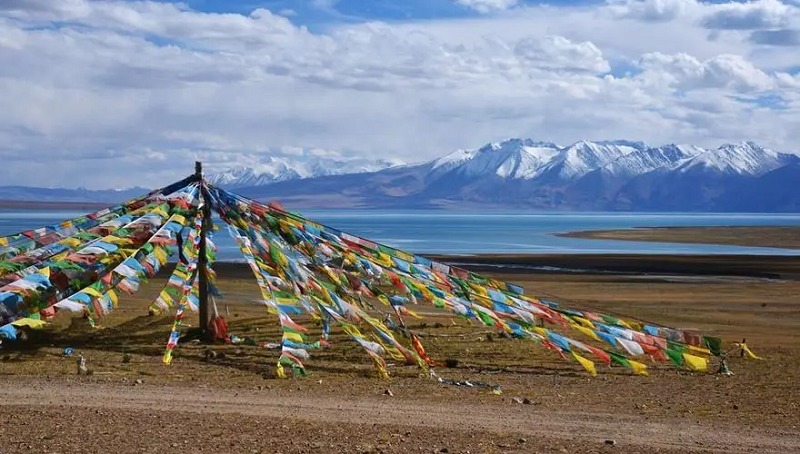
According to Tibetan Buddhism, those five colors are related to the five Buddhas and five kinds of wisdom, which increases the mystery of Tibetan prayer flags. And the colors of prayer flags are fixed and cannot be changed casually. Moreover, the arrangement order of each color is strictly stipulated.
5. Prayer Flags are the Religious Token for Well-being
Prayer flags are the unique spiritual sustenance of the Tibetan people and a religious token for praying for well-being. Since the ancient Zhangzhung period of the Tibetan Plateau, prayer flags have become popular here. Believers engrave scriptures and spiritual prayers on the colorful prayer flags and then hang them in series on cliffs, representative snow-capped mountain passes and bridges connecting the two sides. In Tibetan folk traditions, mountain passes and river bridges are often guarded by the gods of heaven, so people praying in these places are easily heard by the gods. When these places are covered with prayer flags, they will be seen by the inspecting gods, and these places will also be blessed by the gods and resist the invasion of evil spirits.
6. They Should Never be Put on the Ground or Kept Still
It is considered disrespectful too if the Buddhist flags lie on the ground or remain still.
Therefore, they should be hung at a height. Around the frame of the doorway is regarded as the right place to put the flags. And the reason why they are put high above the roof is to let them flutter in the wind. It is said that they emit positive spiritual vibrations and the wind, like silent prayers, carries the prayers.
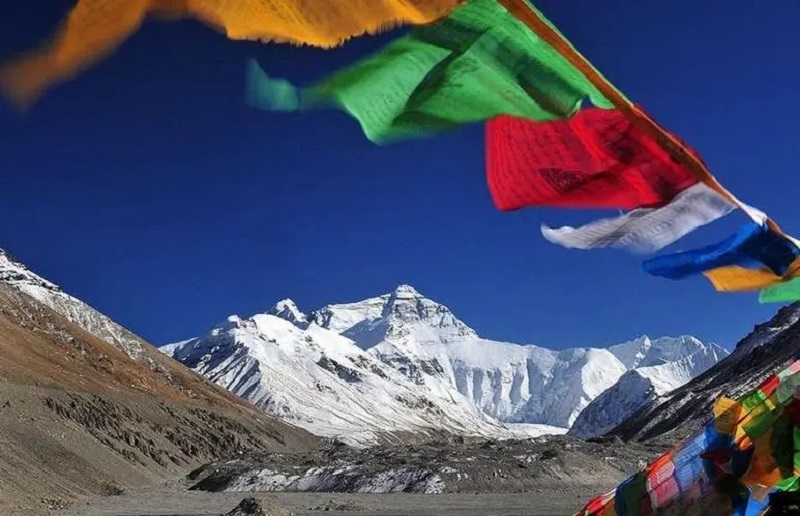
So, if you want to hang them somewhere, make sure that they’re at a height.
7. There are Two Kinds of Flags- Horizontal and Vertical
While the square-shaped, horizontally strung prayer flags are arguably the most common, they aren't the only variety of Tibetan prayer flags you'll see being used at sacred sites and on significant calendar dates. Those flags are called lung dar prayer flags. Flags that fly vertically, which are less common, are known as dar Cho or dar Chen flags.
8. It's a Good Omen to Receive Buddhist Prayer Flags as a Gift
Well, getting these prayer flags as a gift from someone is considered a good omen. So, instead of buying it, getting these flags as a gift from someone is how you should acquire a prayer flag. Therefore, taking prayer flags to your friend after your visit to Tibet is the right thing to do.
9. Color Fading of These Flags also has a Meaning
Fading of the colors on these flags means that the prayers were carried by the breeze. Color fading from the flags is considered auspicious.
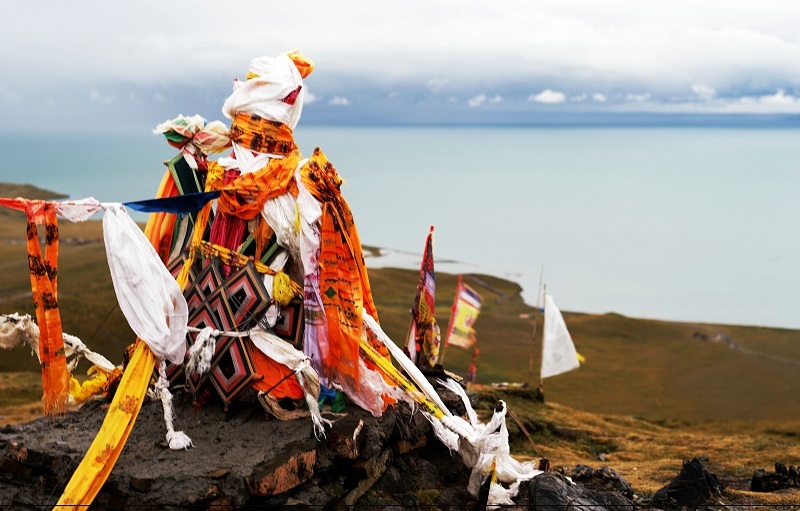
10. The Auspicious Time to Put up a Flag is During the Tibetan New Year
Prayer flags are renewed every year as a symbol of good fortune. The best and auspicious time to put up these flags is during the Losar Tibetan New Year. The date cannot be chosen arbitrarily. It is based on the Tibetan calendar, usually on a certain auspicious day after the first day of the Tibetan New Year. In the morning, the whole family would put on festive costumes, gather on the roof, and hold a solemn and joyful ceremony of inserting prayer flags. In Tibetan, this ceremony is called "Tuosui", which means offering sacrifices to gods and praying for blessings.
Conclusion
The colorful prayer flag decorates the holy snow-covered plateau, like rainbows, and it has become a unique landscape. It shows the spiritual charm of the Tibetan people to the world, and also shows people the cultural landscape of the roof of the world.
For hundreds of years of history, hanging prayer flags has become a traditional custom in Tibetan regions, which is a self-cultivation way. They believe that God will help those who hang prayer flags.
Email response within 0.5~24 hours.


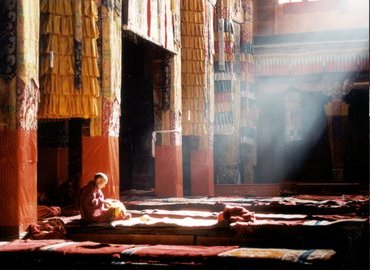
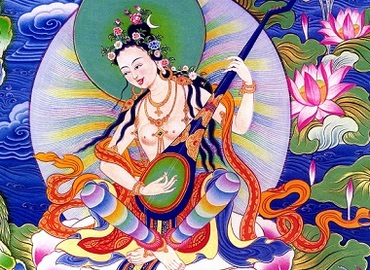
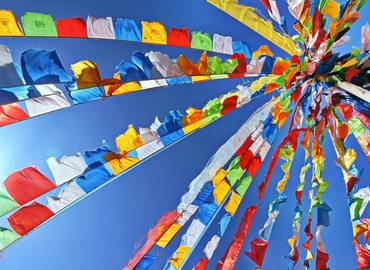
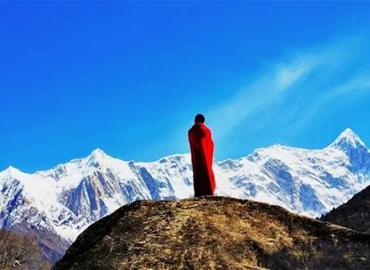

Typically Asked Questions from Our Clients
Asked by Chri***
We were given square flags. When is Losar Tibetan New Year that we can hang them outside up high?
Dear Christina Zelazo,
The Losar Tibetan New Year is on 28 February 2025. It is common to hang prayer flags outside, especially in high places, to bring good fortune for the coming year.